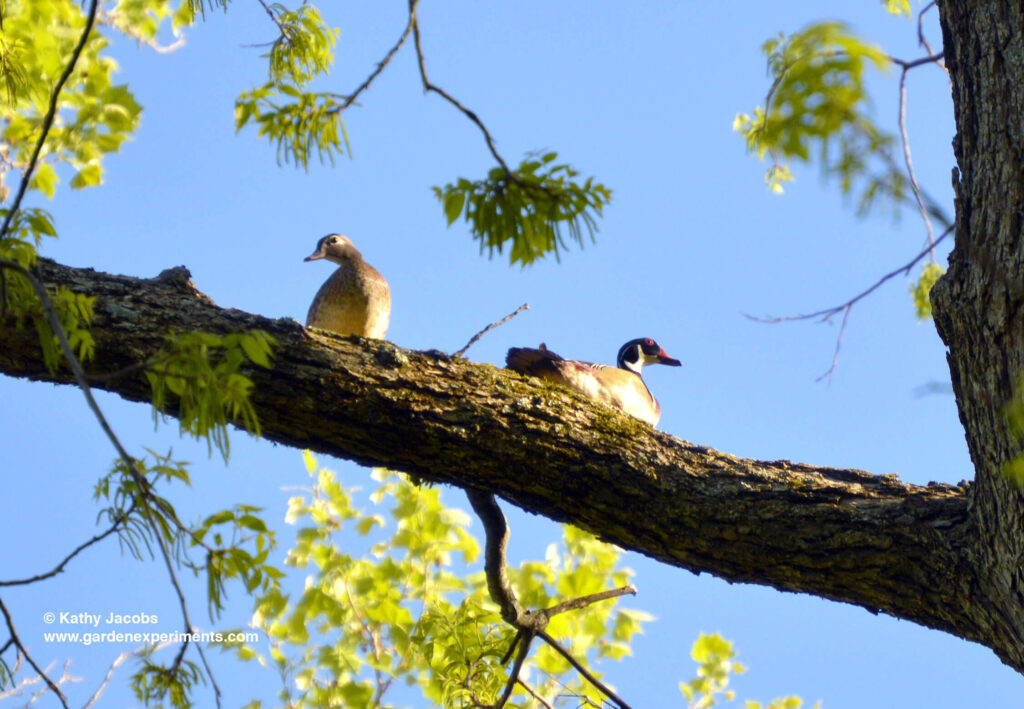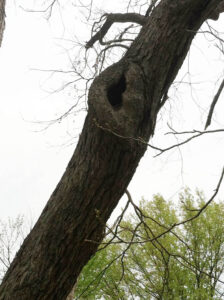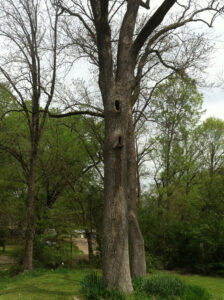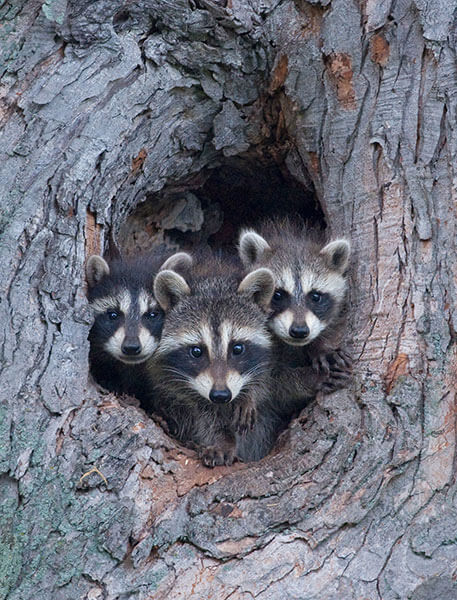As I was heading out to work this morning, I looked up at the large pecan tree in the backyard and saw both the male and female wood duck who have been hanging around our yard for a few weeks. The male was flying off and the female was flying into a cavity in one of the large branches of the tree. This large branch has a nice cavity in it, perfect for nesting animals. It looks like we’re going to have some ducklings in the yard this year!

Cavity Trees: Important Wildlife Homes in Your Yard

You might be surprised at the many birds and small mammals that use cavity trees and snags (dead limbs with holes in them) to nest in. Woodpeckers, sapsuckers, and northern flickers will carve out holes in rotting tree limbs for a nesting site. After they abandon these holes, other birds such as titmouses, ducks, chickadees, swifts, bluebirds, and owls will make us of them. There are about 85 birds in North America that make use of cavities or snags for nesting sites. Small mammals such as flying squirrels, martens, fishers, raccoons, bats, and even black bears will use large holes in trees or abandoned bird nesting holes. These cavities are important habitat for nesting and den sites.
Habitat for cavity-nesting birds and mammals has been declining, especially in towns and cities. People often remove trees from their yards, especially those that have holes in them. Many cavity-nesting birds and bats in North America eat insects – so it’s good to have them around for insect control (See Cavity Nesting Birds of North American Forests for more info).
Safety First
Obviously, if a tree or snag is dangerous or in really bad shape, you need to remove it from your yard for the safety of your family, your neighbors, and to protect your property. However, if the tree looks healthy (you can always check with an arborist if you are concerned about a tree), consider keeping that snag or cavity around for the critters to use.
We have many cavity-nesting birds in the area – woodpeckers, barred owls, and wood ducks, to name a few. We’ve also seen that same tree cavity used by a raccoon for a nesting site last year. Watching the baby raccoon peek its tiny head out of the hole in our pecan was highly entertaining. This cavity in our pecan tree is a popular spot!

If you don’t have any trees with cavities in your yard, you might consider adding bluebird or wood duck boxes. These can act as surrogates for natural tree cavities. Be sure to follow the instructions for placing them in the right location. You probably will need to add a predator guard to your bird boxes if you put them in your yard. The guards will help keep out snakes and mammals that feed on bird eggs.

